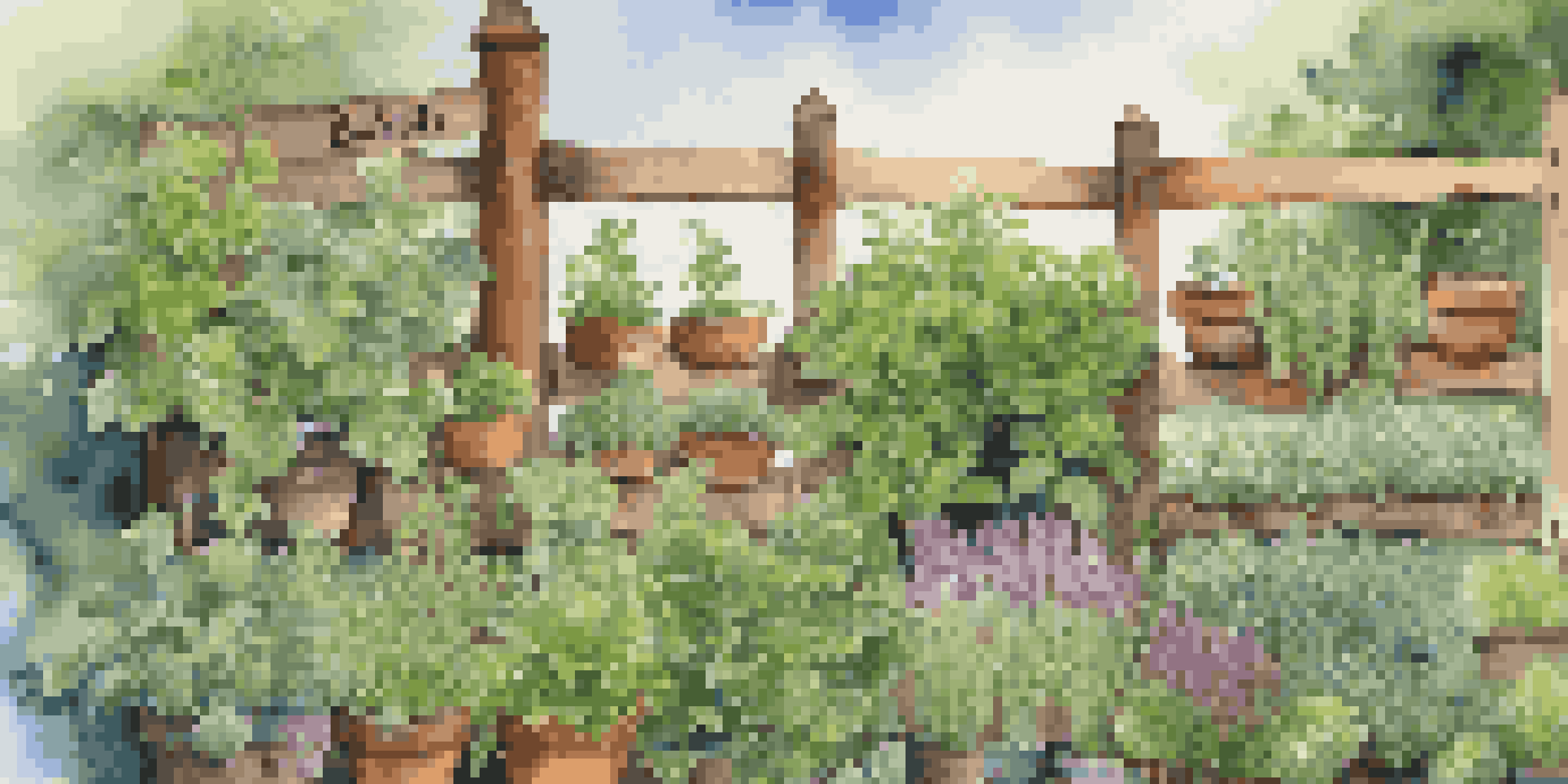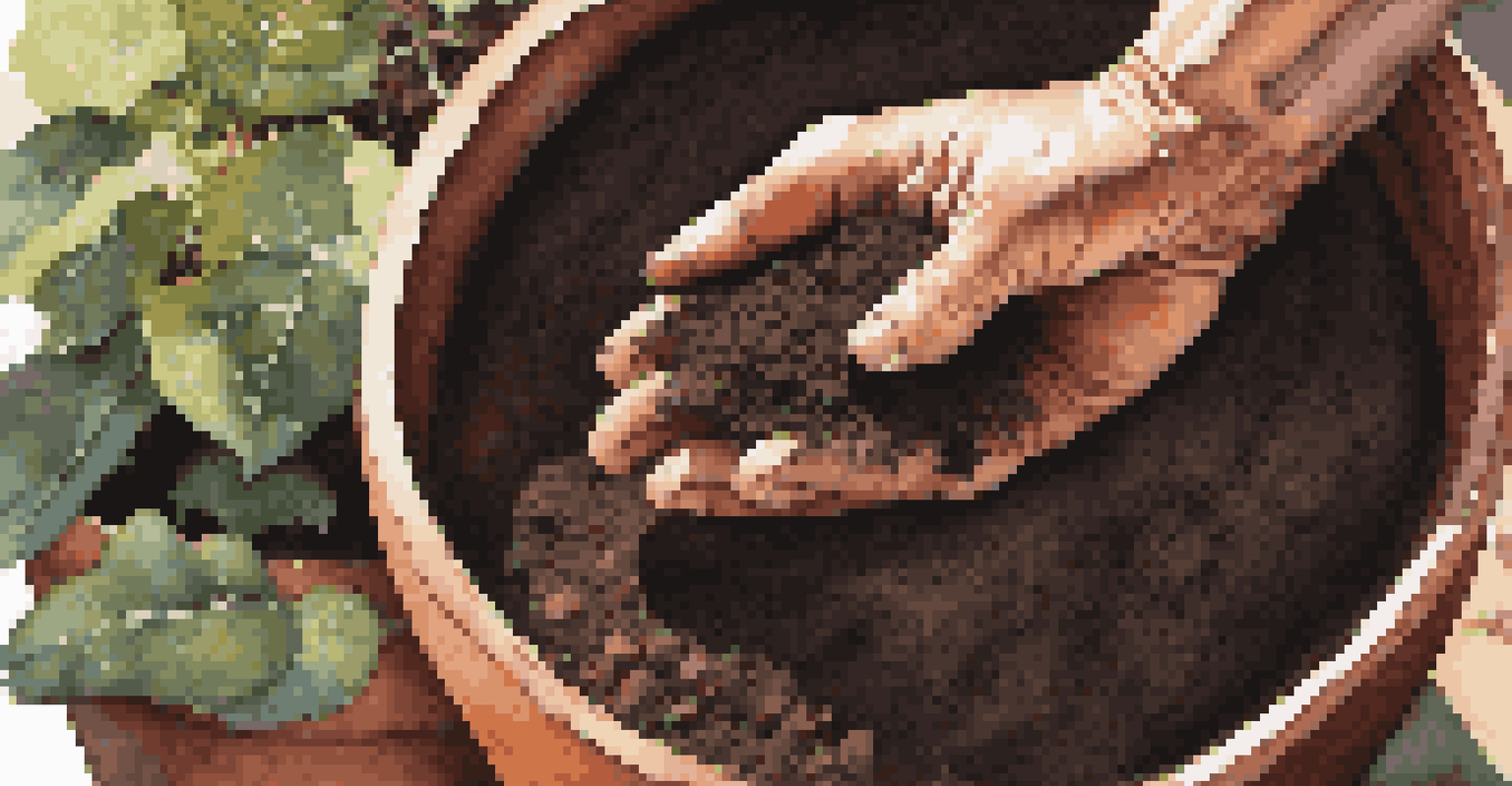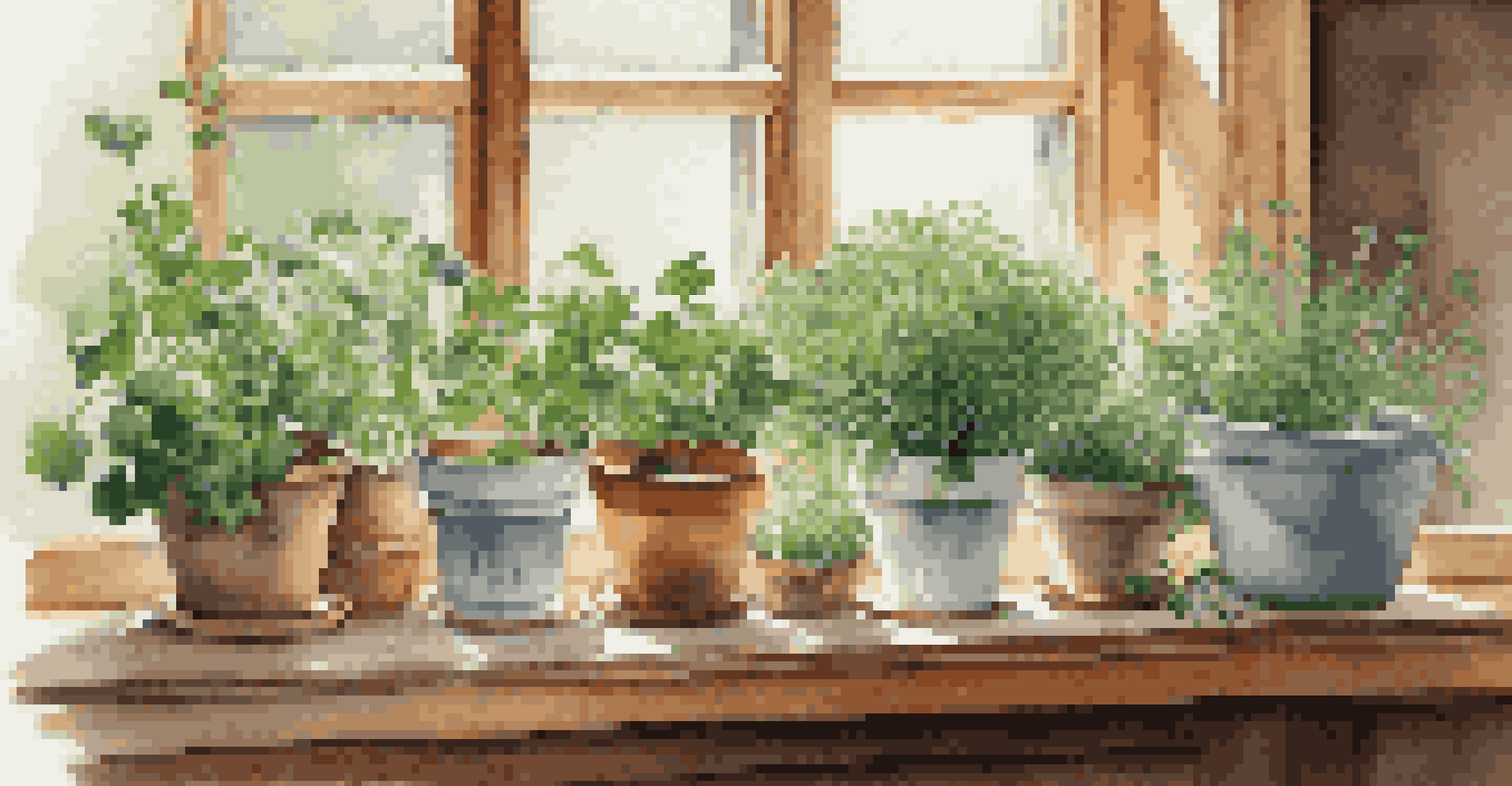Herb Gardening for Beginners: Common Mistakes to Avoid

Starting with the Wrong Herbs for Your Climate
One of the biggest mistakes beginners make is not considering their local climate when choosing herbs. Some herbs thrive in warm, sunny environments, while others prefer cooler or shadier spots. For instance, basil loves the heat, but cilantro can bolt quickly if it gets too hot. Understanding your growing zone can save you time and disappointment.
The garden suggests there might be a place where we can meet nature halfway.
Researching which herbs grow well in your area can help you create a thriving garden. Local gardening centers or online resources can provide valuable insights. It’s also a good idea to talk to other gardeners in your community to see what works best for them. The right herb choices can lead to a successful harvest and a more enjoyable gardening experience.
So, take a moment to check your climate zone before you start planting. This small step can make a world of difference in your herb gardening journey. Remember, planting the right herbs is like setting the foundation for a strong house—you need the right materials to build something great.
Neglecting Soil Quality and Preparation
Soil is the foundation of your herb garden, yet many beginners overlook its importance. Using poor-quality soil can lead to weak plants and disappointing yields. Before planting, invest in good potting mix or amend your garden soil with compost to enrich it. Healthy soil provides the nutrients your herbs need to flourish.

Consider conducting a soil test to understand its pH and nutrient levels. This way, you can adjust your soil accordingly to create the best environment for your herbs. For example, many herbs prefer slightly acidic to neutral soil, so knowing your soil's pH can help you make necessary adjustments.
Regular Harvesting is Key
Harvesting your herbs regularly promotes new growth and prevents them from becoming overgrown and woody.
Remember, just like a chef needs quality ingredients for a great meal, your herbs need quality soil to grow strong and vibrant. Take the time to prepare your soil properly, and you’ll set your herbs up for success right from the start.
Overwatering or Underwatering Your Herbs
Watering can be tricky for new gardeners, and many tend to err on one side or the other. Overwatering can cause root rot, while underwatering can lead to wilting and stunted growth. Finding the right balance is key. A good rule of thumb is to check the soil moisture before watering—if it feels dry a couple of inches down, it’s time to water.
Gardening is a way of showing that you believe in tomorrow.
Different herbs have varying water needs, so it's essential to research each type. For example, rosemary prefers drier conditions, while basil enjoys consistently moist soil. Paying attention to each herb's requirements will help you avoid common watering mistakes.
To make things easier, consider using self-watering pots or drip irrigation systems. These tools can help ensure your herbs receive a steady supply of moisture without the risk of overwatering. Just like a good recipe, the right watering technique can lead to a delightful outcome.
Ignoring Sunlight Requirements
Sunlight is vital for herb growth, yet many new gardeners don’t give it enough thought. Different herbs require different amounts of sunlight; some thrive in full sun, while others prefer partial shade. For instance, mint can tolerate shadier spots, while thyme needs plenty of sunlight to grow robustly.
Before planting, observe your garden space to see how much sunlight it receives throughout the day. This will help you position your herbs correctly. If you don’t have enough natural light, consider using grow lights to supplement what your plants need.
Choose Herbs for Your Climate
Selecting herbs that thrive in your local climate is crucial for a successful and enjoyable gardening experience.
Just like people, herbs have their own preferences for light. By matching your herbs with their ideal sunlight conditions, you’ll be well on your way to a healthy, productive herb garden.
Planting Too Close Together
Beginners often make the mistake of overcrowding their herbs, thinking this will yield more produce. However, plants need space to grow and access to air circulation. When herbs are too close, they can become stunted and more susceptible to diseases. For example, basil plants need room to spread out their leaves, while dill requires space to grow tall.
To avoid crowding, check the spacing recommendations for each herb type before planting. A good rule of thumb is to follow the guidelines on the seed packet or plant label. If you're planting in pots, make sure they are large enough to accommodate the herbs' mature size.
Think of it like a dance floor: everyone needs room to move freely. By giving your herbs the space they need, you’ll encourage healthy growth and greater yields.
Neglecting Pests and Disease Management
Pests can be a gardener's worst nightmare, but many beginners overlook this crucial aspect of herb gardening. Ignoring signs of pests or diseases can lead to significant issues down the line. A proactive approach is key: regularly inspect your herbs for any signs of trouble, like discolored leaves or unusual spots.
There are many natural ways to manage pests without resorting to harsh chemicals. For example, introducing beneficial insects like ladybugs can help control aphid populations. Additionally, companion planting can deter pests naturally; planting marigolds alongside your herbs can keep unwanted bugs away.
Soil Quality Matters
Investing in good soil preparation ensures your herbs have the nutrients they need to grow strong and healthy.
Being vigilant about pest management is like keeping a close eye on your car's maintenance—it can save you from bigger problems later. Addressing issues early will help your herbs thrive and yield a bountiful harvest.
Failing to Harvest Regularly
Once your herbs start to grow, it’s tempting to let them flourish without interference. However, failing to harvest regularly can lead to overgrown, woody plants with less flavor. Harvesting encourages new growth and keeps your herbs healthy. For instance, regularly snipping basil leaves promotes bushier growth and prevents flowering.
It’s also important to know the right way to harvest each herb. Some herbs, like oregano, can be cut back significantly, while others, like chives, should be trimmed lightly. Understanding the best harvesting techniques for each herb will help you maximize your yield.

Think of harvesting like pruning a tree—regular care leads to a healthier, more productive plant. By incorporating a routine harvest, you’ll ensure your herbs remain flavorful and vibrant throughout the growing season.
Neglecting to Learn and Experiment
One of the joys of gardening is learning through experience, yet many beginners feel overwhelmed and stop experimenting. It’s essential to embrace the learning curve and be open to trying new things. Every garden is unique, and what works for one person may not work for another. Allow yourself the freedom to explore different herbs, growing techniques, and garden layouts.
Keep a gardening journal to track your successes and failures. This can help you identify patterns and refine your approach over time. For example, noting how certain herbs performed in different seasons can guide your future planting decisions.
Remember, gardening is as much about the journey as it is about the destination. By staying curious and adaptable, you’ll not only avoid common pitfalls but also cultivate a deeper connection with your herb garden.